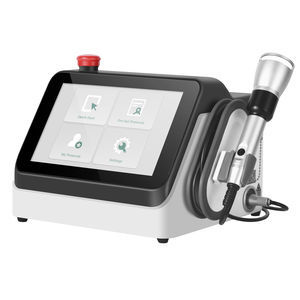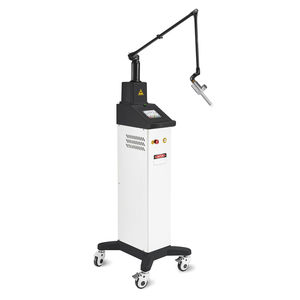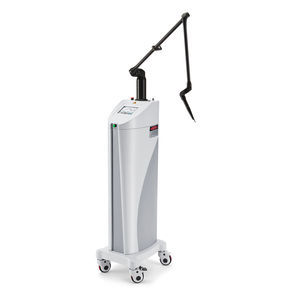
- Surgery unit
- Surgical Instruments
- Wound debridement laser
- Shanghai Wonderful Opto-Electrics
- Company
- Products
- Catalogs
- News & Trends
- Exhibitions
Soft tissue surgery laser ML015-CD+wound debridementCO2tabletop
Add to favorites
Compare this product
fo_shop_gate_exact_title
Characteristics
- Applications
- soft tissue surgery, wound debridement
- Amplifying medium
- CO2
- Ergonomics
- tabletop
- Laser class
- class 4
- Wavelength
10,600 nm
- Average power
15 W
Description
The fractional C02 laser is overwhelmingly the most popular laser skin rejuvenation technology currently in use. The C02 laser equipped with the fractional scanner, delivers 10.6pm laser in fractional manner into the skin while leaving the untreated surrounding areas intact. Laser creates microscopic thermal dot on surface and performs within tissues, offering improve skin tightening, age spots, fine lines, acne scars, stretch marks removal. Laser resurfacing technologies represent an exciting development in the cosmetic surgeon's repertoire to improve the tone, texture, and pigmentation of the skin.
Advantages:
■ C02 laser produces higher power with relative efficiency, provide less tissue trauma and edema, which lead to minimal heat damage, much short time for healing
■ As ablation occurs, C02 deep heating stimulates collagen growth and remodeling while offering the patient comfort level and convenience that approaches non-ablative resurfacing.
■ Fractional scanner distribute the laser energy in an even pattern, which produces balanced
vaporization, coagulation, and the thermal effects on the tissues. These effects cause collagen contraction, producing a skin-tightening effect that is considered to be effective for the skin resurfacing
■ Five shapes and six density options, 95% coverage
Applications:
» Skin peeling:
» Skin rejuvenation
» Acne scars removal
» Wrinkles removal, pore reduction
» Pigmentation removal
» Aging, sagging, skin tightening
Other Shanghai Wonderful Opto-Electrics products
Medical lasers
*Prices are pre-tax. They exclude delivery charges and customs duties and do not include additional charges for installation or activation options. Prices are indicative only and may vary by country, with changes to the cost of raw materials and exchange rates.









